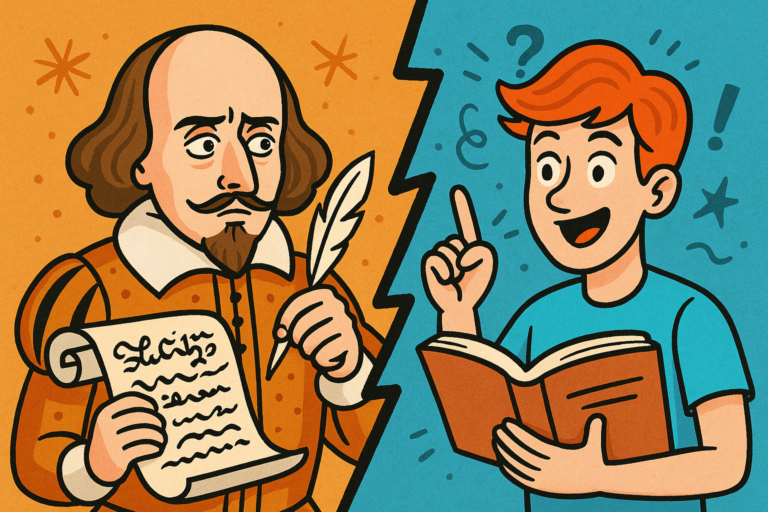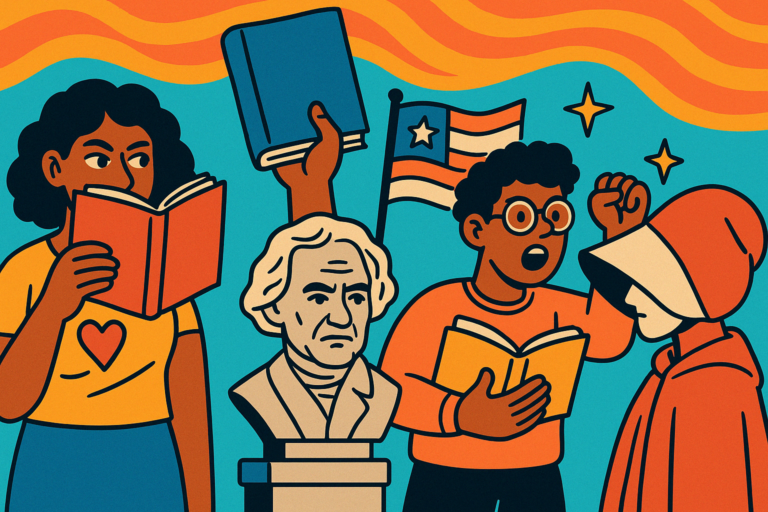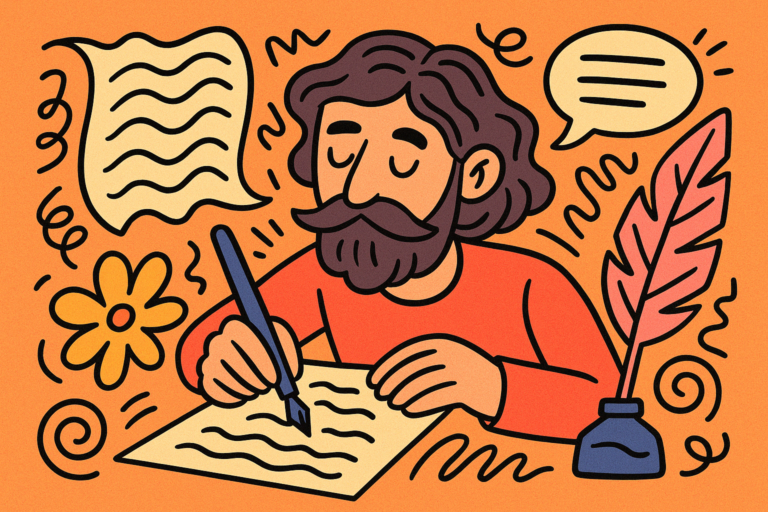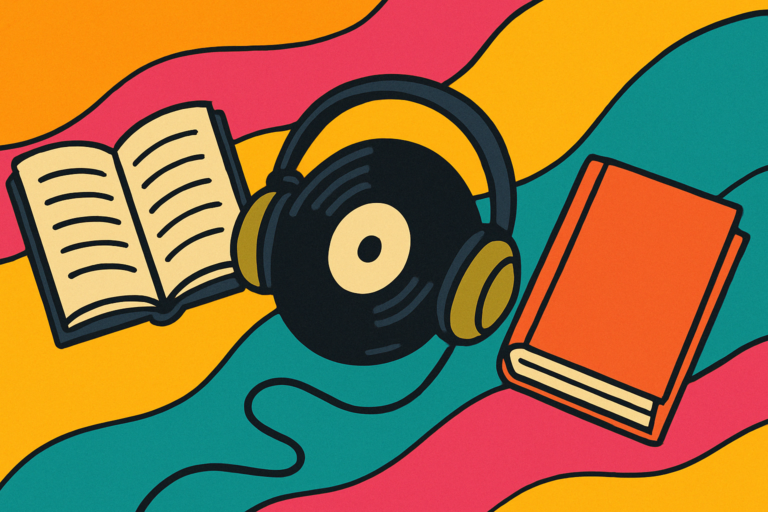How Getting Lost In A Novel Might Make Us More Understanding In Real Life
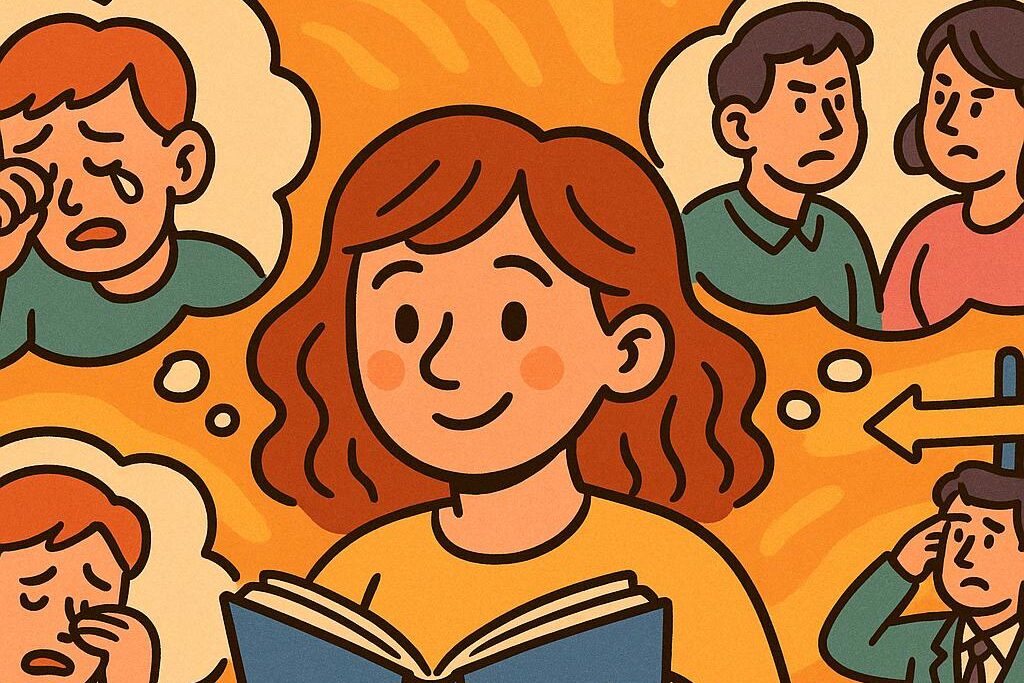
I’ve always been fascinated by the way a good novel can completely pull us in—how we lose track of time, forget the real world, and start feeling things for people who, technically, don’t even exist. But as I dug deeper into this idea, I realized there’s something far more interesting going on beneath the surface.
Turns out, getting lost in fiction—what researchers call narrative transportation—might actually be doing more than entertaining us. It’s shaping how we understand other people.
And for those of us who care about empathy, human connection, or even just navigating social life a little better, that’s a pretty big deal.
In this post, I want to unpack how reading fiction, especially literary fiction, affects the brain and behavior. If you’re already familiar with this space, I hope this gives you a few fresh angles—or at least some good material for your next conference coffee break chat.
Fiction Is an Empathy Accelerator
Alright, let’s talk science.
If you’ve been in this field for a while, you’ve probably come across the big-name studies linking fiction to empathy. But I want to zoom in on why this connection is so compelling—and how it’s not as straightforward as people think.
First, there’s the neurological angle.
When we read stories, especially ones rich in character psychology, our brains light up in the same areas we use for real-world social cognition. That includes the medial prefrontal cortex, the temporoparietal junction, and the precuneus—regions associated with theory of mind, emotional processing, and perspective-taking.
Basically, our brains are simulating social interaction. We’re not just watching characters; we’re rehearsing how to be them or understand them.
The go-to study here is probably Kidd & Castano (2013), which made headlines when it found that reading literary fiction (as opposed to genre fiction or nonfiction) improved people’s theory of mind—that is, their ability to attribute mental states to others.
But what often gets overlooked is how subtle that effect was. It wasn’t a huge leap in empathy, but more of a cognitive nudge. Still, for experts looking to nudge minds in education or leadership, that matters.
Then there’s Mar et al. (2006), who found that frequent fiction readers scored higher on empathy and social skills.
What’s interesting here is that this wasn’t about a single story—it was about sustained exposure. So we’re not just talking about an isolated brain boost; we’re talking about a long-term shaping of social sensitivity.
But here’s where things get really juicy: not all fiction is created equal.
Literary fiction, with its complex characters and ambiguous plots, seems to demand more from us.
We have to infer motives, hold contradictory information, and tolerate uncertainty—skills that overlap with real-world interpersonal challenges. Compare that to formulaic genre fiction, where characters can be more stereotyped, and the reader is often rewarded for prediction, not interpretation.
One example I personally found powerful is Kazuo Ishiguro’s Never Let Me Go. The way readers slowly piece together the moral horror of the world—not through plot twists but through emotional proximity to the characters—is a brilliant exercise in ethical perspective-taking.
You’re not just thinking “This is wrong,” you’re feeling the weight of it from inside the character’s quiet despair.
What I find exciting—and a little underdiscussed—is how fiction works like a social simulation lab.
It gives us low-stakes environments to test out empathy, judgment, and moral nuance. We can engage emotionally, fail safely, and come out a little sharper.
So while we often think of fiction as escapism, the research suggests it’s actually reality training. And for anyone in psychology, education, or even AI design—this is a tool worth paying attention to.
Mechanisms of Empathy Building Through Narrative
So now that we’ve seen the science pointing to a link between fiction and empathy, let’s break down what’s actually happening under the hood when we get immersed in a novel. It’s not magic—it’s process.
And there are several overlapping mechanisms that explain why narrative immersion might shape us into better perspective-takers. I’ve listed five here that really stood out in the literature and in interviews I came across while researching this.
1. Perspective-Taking
This one feels intuitive, but it’s worth pausing on. When we follow a character through their world—especially when that world is wildly different from our own—we’re practicing a cognitive skill called perspective-taking.
And not the surface-level “I understand what you’re going through” kind, but the deep, effortful version that involves tolerating ambiguity and holding conflicting beliefs.
Think of Toni Morrison’s Beloved. Readers are forced to sit with Sethe’s experience, not just as a historical figure but as a human being shaped by trauma, love, and unbearable choices.
We don’t get easy answers.
And that’s the point.
Morrison pulls us into a morally and emotionally tangled space where our job isn’t to judge, but to understand.
In the real world, this same ability lets us manage team conflicts, support patients, or navigate cross-cultural interactions with more care. It’s empathy, but with cognitive complexity attached.
2. Emotional Simulation
This is where the brain gets a full-body workout. When we read fiction, especially character-driven fiction, our mirror neuron systems kick in.
We don’t just read about sadness—we simulate it. And because we’re doing it in a safe, imagined space, we can explore emotions that might be uncomfortable or risky in real life.
What’s cool is that fiction often forces us to feel for people we might not otherwise connect with. Take The Reluctant Fundamentalist by Mohsin Hamid. The second-person narrative pulls us into the protagonist’s perspective, even as we question his motives.
That discomfort?
That push and pull between emotional connection and ethical doubt? That’s the work of empathy happening in real time.
Researchers like Raymond Mar have noted that this kind of simulation helps us refine our affective responses. It’s not about passively absorbing emotions—it’s about practicing how we respond to them. Fiction becomes a kind of sandbox for emotional intelligence.
3. Moral Engagement
Now let’s get into ethics. One thing I found particularly compelling is how fiction doesn’t just present moral questions—it makes us feel the stakes.
That’s very different from, say, a philosophical thought experiment or a policy debate.
For example, in Atonement by Ian McEwan, the emotional fallout of a single false accusation unfolds over decades.
There’s no clear villain. Everyone’s trying, failing, justifying, regretting. The moral gray area is enormous—and totally human. And as readers, we’re implicated. We’re asked to judge, to forgive, to wrestle with consequences that don’t wrap up neatly.
In this way, fiction becomes a moral gym. We flex ethical muscles we don’t often use in daily life.
And this kind of engagement strengthens not just our ability to judge right from wrong, but to understand why people do what they do in morally complex situations. That’s gold for educators, psychologists, and anyone trying to design systems or policies with human behavior in mind.
4. Slowing Down Cognition
We live in a hot-take culture—fast thinking, fast judgment. Fiction slows us down. It asks us to linger, to reread, to dwell in uncertainty. Especially literary fiction, which often refuses to explain itself or tie up loose ends.
This slowing down is huge. Cognitive psychologist Keith Oatley calls it a kind of “reflective simulation”, where we not only experience another person’s world but have time to think about how and why they act the way they do.
Think about The Remains of the Day by Ishiguro (yes, him again—I have a thing). Stevens, the butler, is a man full of repressed emotion and missed chances. Nothing dramatic happens, but the entire novel is a masterclass in inference. We spend most of it trying to read what’s unsaid.
That’s not just literary skill-building—it’s empathy training for the kind of slow, deliberate thinking that’s often missing in high-stakes, high-speed environments like medicine or business.
5. Identification vs. Observation
Finally, this one gets into the dual role we play as readers. Sometimes we identify with a character—we feel their pain, we root for them, we become them. But other times we observe—we step back, assess, critique. And in great fiction, we often do both at once.
This oscillation between identification and observation enhances metacognitive empathy—the ability to monitor not just what we feel, but how and why we’re feeling it. It’s empathy with self-awareness built in.
For instance, in Lolita, Nabokov forces us into this dual position.
We’re inside Humbert’s head, seduced by his lyrical voice—and simultaneously horrified by his actions. That push-pull dynamic creates space for ethical reflection and emotional engagement, both at once.
In short, fiction doesn’t just train us to feel—it trains us to understand how we feel and how that affects our perception of others. That’s a level of empathic precision that’s incredibly valuable in real-world decision-making.
Why This Matters Beyond Literature
Okay, so we’ve got some strong evidence and theory suggesting that deep engagement with fiction builds empathy. But how does this play out beyond the reading nook or English department?
Here’s where it gets practical—and, honestly, kind of exciting.
More and more, educators, healthcare professionals, and leadership trainers are seeing fiction not just as “soft stuff” or nice-to-have cultural enrichment, but as a tool for transformation.
It’s being embedded into real-world programs, with serious goals: better communication, more humane care, sharper leadership, and even improved international relations.
Let’s look at a few key areas.
1. Medical Education
A growing number of medical schools are incorporating narrative medicine into their curriculum. The idea is simple: by reading and reflecting on stories—often ones centered on illness, grief, or moral complexity—medical students can develop deeper empathic resonance with patients.
Rita Charon, a pioneer in the field, argues that narrative competence helps doctors “recognize, absorb, interpret, and be moved by stories of illness.”
And we’re not talking about teaching students to be nicer—we’re talking about training them to listen better, ask deeper questions, and recognize the emotional layers of patient care.
Programs at places like Columbia and Harvard are using texts like The Death of Ivan Ilyich or contemporary illness memoirs to spark these discussions.
The results? Increased patient satisfaction, lower physician burnout, and stronger doctor-patient communication.
2. Corporate Leadership
In the business world, leadership development programs are starting to embrace fiction as a tool for building emotional intelligence and adaptive thinking. Reading fiction can challenge cognitive biases, encourage ethical reflection, and promote better team dynamics.
For example, some executive coaching programs use stories like The Things They Carried or The Road to explore grief, loyalty, and crisis leadership.
It’s not just about feeling emotions—it’s about understanding how narratives shape decisions, both our own and others’.
Leaders who read more fiction tend to score higher on empathy assessments, make fewer snap judgments, and are more open to feedback. That’s a competitive edge in environments where psychological safety and ethical clarity are paramount.
3. Cross-Cultural Training
Fiction can also be a bridge across cultures. Stories allow us to experience unfamiliar worldviews from the inside, building cultural empathy without reducing people to bullet points or checklists.
Reading works like Chimamanda Ngozi Adichie’s Half of a Yellow Sun or Jhumpa Lahiri’s The Namesake gives readers not just facts about another culture, but emotional context—what it feels like to migrate, to straddle multiple identities, to live with inherited trauma.
This kind of insight is priceless in international diplomacy, development work, or any context where cultural nuance matters.
Some NGOs and government training programs are already weaving literature into their cross-cultural modules.
It’s early days, but the feedback is promising: fiction fosters not just understanding, but humility.
But Let’s Be Real – It’s Not Always a Straight Line
Here’s the thing: not all fiction leads to empathy. Some studies have shown no effect—or even negative effects—depending on the content, the reader’s personality, and the context.
A hyperviolent thriller probably won’t make you more compassionate. And someone who’s reading defensively (e.g., to reinforce biases) might actually deepen their echo chamber.
Individual differences matter. Openness to experience, prior reading habits, even mood—all influence how a story lands.
That’s why narrative interventions have to be carefully designed. It’s not about throwing novels at people—it’s about intentional curation and guided reflection.
3 Takeaways for Experts (TL;DR)
Let me boil this all down:
- Literature is a cognitive-emotional gym.
The right kind of fiction can train the brain to think and feel with more complexity. - Reading habits can inform training programs.
Whether you’re in medicine, management, or multicultural education, structured fiction reading has real utility. - Future research should dig deeper.
We need to look at genre effects, digital vs. print, and the role of cultural context. There’s so much left to explore.
So, does getting lost in a novel make us better humans?
Maybe not every time. But when it does, it’s not because we’re escaping reality—it’s because we’re rehearsing it.
With more emotion.
More nuance. And maybe, just maybe, more grace.
